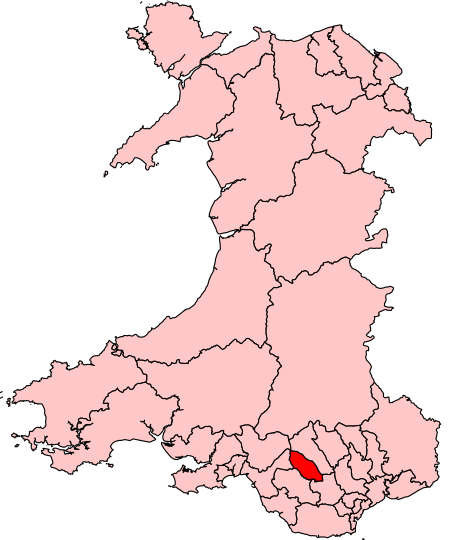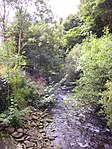Rhondda

Rhondda , or the Rhondda Valley (Welsh: Cwm Rhondda [kʊm ˈr̥ɔnða]), is a former coalmining area in South Wales, previously in Glamorgan, now a local government district, of 16 communities around the River Rhondda. It embraces two valleys – the larger Rhondda Fawr valley (mawr large) and the smaller Rhondda Fach valley (bach small) – so that the singular "Rhondda Valley" and the plural are both commonly used. In 2001, the Rhondda constituency of the National Assembly for Wales had a population of 72,443; while the Office for National Statistics counted the population as 59,602. Rhondda forms part of Rhondda Cynon Taf County Borough and of the South Wales Valleys. It is most noted for its historical coalmining industry, which peaked between 1840 and 1925. The valleys produced a strong Nonconformist movement manifest in the Baptist chapels that moulded Rhondda values in the 19th and early 20th centuries. It is also famous for male voice choirs and in sport and politics.
Excerpt from the Wikipedia article Rhondda (License: CC BY-SA 3.0, Authors, Images).Rhondda
Cemetery Road,
Geographical coordinates (GPS) Address Nearby Places Show on map
Geographical coordinates (GPS)
| Latitude | Longitude |
|---|---|
| N 51.615938 ° | E -3.417521 ° |
Address
Porth Community School
Cemetery Road
CF39 0BS , Porth
Wales, United Kingdom
Open on Google Maps







